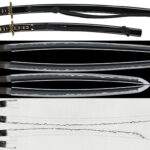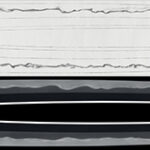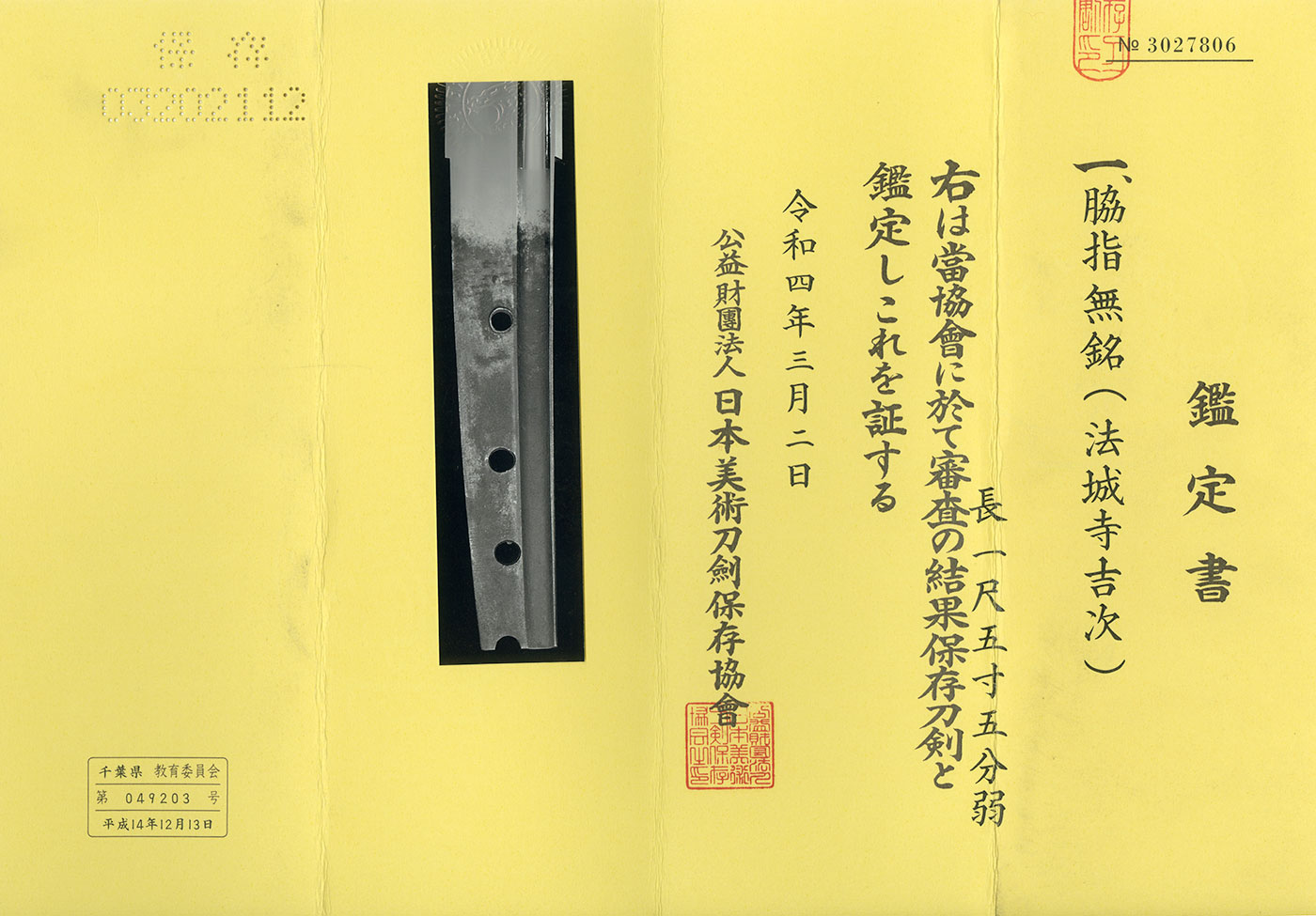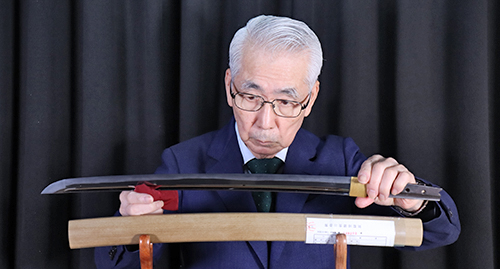Ordering number:AS24538
Wakizashi in Shirasaya (NBTHK Hozon Token)
Signature: Mumei (attributed to Hōjōji Yoshitsugu)
無銘(法城寺吉次)
We divide 4 sections for each sword as Saijyo Saku, Jyojyo Saku, Jyo Saku, and Regular Saku.
This work is ranked as Jyojyo Saku for an unsigned piece attributed to Hōjōji Yoshitsugu.
Habaki: Single-layer gold-plated habaki
Blade Length: 47.0 cm (18.5 in)
Curvature: 0.6 cm (0.24 in)
Mekugi Hole(s): 3
Width at Base (Motohaba): 3.11 cm (1.22 in)
Width at Tip (Sakihaba): 2.27 cm (0.89 in)
Thickness (Kasane): 0.64 cm (0.25 in)
Sword Weight: 460 g
Period: Around the Kanbun era of the Edo period
Shape: O-suriage, unsigned.
Jigane: Itame grain mixed with mokume grain.
Hamon: Suguha-based with active ashi, reminiscent of Kotetsu's work, and a rounded boshi return.
Features: Higo no Kami Hōjōji Tachibana Yoshitsugu, also known as Hashimoto Kisaburo, was a resident of Tobu. He trained under Hōjōji Kunimasa and received the title of Higo no Kami during the Kanbun era. He later moved to Kagoshima in Satsuma around the Genroku era. Yoshitsugu's works often feature a deep nioi-guchi suguha resembling styles by Kotetsu or Kaneshige. Part of the Edo Hōjōji school, he produced works similar to Kotetsu, Masahiro, and Kaneshige.
NBTHK Hozon Token
Aoi Art Estimation Paper
Whole Oshigata
*Please note: The price does not include shipping fees.
Auction Starting Price:250,000JPY
Place Bid
Related Items:
 Wakizashi: Oumi Kami Hojoji Tachibana Masahiro (NBTHK Hozo Token)
Wakizashi: Oumi Kami Hojoji Tachibana Masahiro (NBTHK Hozo Token)
 Dai Sho : Motohira(Dai Sho:NBTHK Tokubetsu Hozon Token)(Daisho Koshirae: NBTHK Tokubetsu Hozon Tosogu)
Dai Sho : Motohira(Dai Sho:NBTHK Tokubetsu Hozon Token)(Daisho Koshirae: NBTHK Tokubetsu Hozon Tosogu)
 Wakizashi: Inoue Izuminokami Kunisada Kikumon (August 1665)(NBTHK Tokubetsu Hozon Token)
Wakizashi: Inoue Izuminokami Kunisada Kikumon (August 1665)(NBTHK Tokubetsu Hozon Token)
 Wakizashi:Omi Daijo Fujiwara Tadahiro(NBTHK Hozon Token)(NBTHK Tokubetsu Kicho Token)
Wakizashi:Omi Daijo Fujiwara Tadahiro(NBTHK Hozon Token)(NBTHK Tokubetsu Kicho Token)
 Wakizashi: Mutsu Daijo Miyoshi Nagamichi(Chujo Nagashige)(NBTHK Tokubetsu Hozon Token)
Wakizashi: Mutsu Daijo Miyoshi Nagamichi(Chujo Nagashige)(NBTHK Tokubetsu Hozon Token)
 Daisho:Tame Minobe Akihide Shi Chikushu Sanno Ju Sotsutomu Saku Showa 60 Nen 8 Gatsu Kichijitsu (August 1985)(NBTHK Hozon Token)
Daisho:Tame Minobe Akihide Shi Chikushu Sanno Ju Sotsutomu Saku Showa 60 Nen 8 Gatsu Kichijitsu (August 1985)(NBTHK Hozon Token)







